Justin Rose: Secrets Of My Game
We sat down with Justin Rose to discuss the secrets of his game!
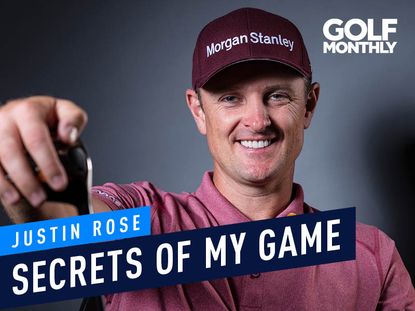
We sat down with Justin Rose to discuss the secrets of his game!
Justin Rose: Secrets Of My Game
In this interview we learn how Justin Rose's swing has changed over the years, what he learnt from his Dad and working with his coach Sean Foley. Justin reveals some interesting insights to his game which could potentially benefit your game too!
WATCH: Justin Rose: Secrets Of My Game
Justin Rose: Secrets Of My Game
My swing DNA
There are two things that have remained fairly constant in my swing from when I first started playing golf. I release it pretty hard in the swing and that comes from years of growing up with a very open clubface.
The club would be very toe-down at the top of my backswing so I would have to work hard to square the face at impact. As a young player, this was a way of creating speed. Because of that, my head tends to stay back through impact as well.
Get the Golf Monthly Newsletter
Subscribe to the Golf Monthly newsletter to stay up to date with all the latest tour news, equipment news, reviews, head-to-heads and buyer’s guides from our team of experienced experts.
Those are the traits I’ve had a really hard time getting rid of, but in some ways they’re my talent. This is how I play golf. I’m not a guy who is closed and super-strong at the top of the backswing and that holds the face very passive through impact.
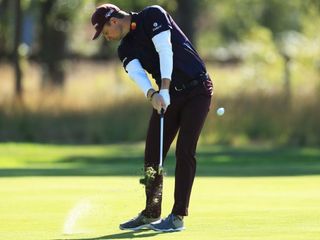
I can sort of do it on the driving range, when I’m in the flow, but it’s something that I’ve never really been able to bed into my game to take to the golf course.
Early Lessons
My dad taught me about the fundamentals – having a good grip, alignment, set-up. He read golf magazines and he passed on what he knew, but I would say he taught me more about the mental side.
He was fantastic at how we prepared for events. I think I was way ahead of the curve in terms of how we would go about setting our targets and working into a tournament.
Whether it was the McGregor Trophy for U16s or the Carris Trophy for England U18s, we would have a two- or three-month plan in place for how I would prepare.
I even remember getting ready for the Walker Cup. I’d never played in America and I’d never played in that amount of humidity.
So, I remember going up to my bathroom, turning on the shower, turning on the bathtub; trying to steam the whole room up, wearing layers of clothing and practising my putting in there for an hour. That was my way of preparing.
My dad always encouraged me to think about the mental side and preparation. We also had a recall system.
I remember at Radcliffe-on-Trent, where the England U16s Championship was played, I hit a great shot into the last hole to six feet. We called it the Radcliffe-On-Trent 9-iron.
Forever more, every time I had a 9-iron, I’d try to conjure up those positive memories. He was very, very good at the mental side.
Foley factor
When I started with Sean Foley, we definitely had a three-phase approach – backswing, transition and then the follow-through. I still haven’t mastered the follow-through, in terms of being completely in balance with the club-face stable.

We’re always continuing to refine my game, but we’ve had to work around my injuries as well.
Sean inherited some problems with my swing and my body based upon my previous technique. So from 2016 we started to look at the golf swing not so much from how we would want it to be technically perfect, but what was safe for me.
In some ways we went a little bit retro – we call it 1960s style. I now have a lot more slack in my lower half, where my right leg straightens and my left leg moves a lot more.
It’s like Sam Snead and guys of the past, rather than the X-factor approach of today where you keep the lower half still and you turn the upper body on top. We’ve gone away from that methodology.
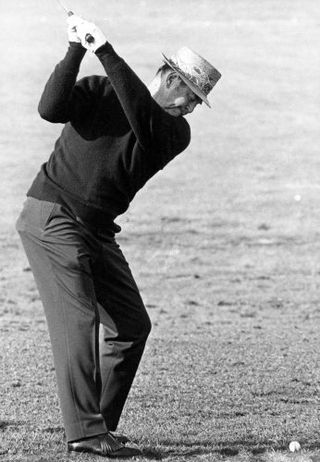
I think Sean’s intellect has caught up with his intuition. As a coach, he has learnt so much on the Trackman side, but more from biomechanics.
He doesn’t have a one-method-fits-all approach, which I don’t think is good coaching. Instead, you need to understand the tendencies of a player and what they are physically capable of doing or not doing.
From there you have work-arounds. He had that somewhat figured out intuitively when he was a young coach. Now, his intellect is making sense of it all.
I think both of us are now going on a slightly different journey, where we’re going back to simplicity. Taking away the camera, taking away Trackman and just going back a little bit more to the art form of it, rather than always trying to scientifically prove it.
Technology in coaching
I think Trackman has been huge in terms of understanding the D-plane – that is the combination of swing direction and attack angle. Those are the two things that create the club path.
I used to look at my divot and think, “My divot is straight so why is the ball hooking?” Well, if you swing straight at the target with a very steep angle of attack, essentially the sweetspot is travelling out to the right through the ball.
Science has figured that out.
I could never understand why I always used to hook the ball when I tried to hit it low and it’s for the exact same reason. You put your ball back in your stance and all of a sudden, you’re hitting down more and the sweetspot is travelling more to the right. As a result you’re putting more right-to-left spin on the ball.
Technique and feel
I sometimes like to use technology to get a benchmark for where my feels are.

With the driver, I like to hit shots on Trackman because if I hit 2˚ or 3˚ up on the ball, I want to know how far out to the right I can swing the club to create what is a fairly neutral path. I can learn by doing that. It’s creating a benchmark as a feel.
I wouldn’t say that I’m actually that technical; people often think that I am but I would use the technology to create a feel. What can I then go and play with on the golf course? It’s just a way of giving myself parameters.
Two-way miss
You can never play perfect golf. I think that great golf is about how good your bad shots are.
A friend of mine, a beginner golfer, said, “I have quite a big ‘V’ in my game.” That was the way he described it where the ball goes left and right.
I said to him, “I’ve got a ‘V’ in my game too, it’s probably just a lot tighter than yours.”
We’re always trying to bring these parameters in, in terms of what’s good and what’s bad. A two-way miss is very hard to play with.
If you have a tendency, one way or another, you can always make a smart decision on the golf course knowing what your tendencies are. Trying to get rid of a two-way miss will be the first thing you’ve got to try and do in your game.
Putting
The exploration of my putting through the years has been interesting.

The more I learned about my putting, the worse I became to the point where I had learned enough. I realised what didn’t work, what I had to strip away and what I had to simplify.
For every player there are growth phases and performance phases. I think that it’s important to go through those growth phases while you’re trying to learn and tinker, get better and improve.
The performance phases are always generally stripping things away and simplifying it.
Work Balance
It’s important at the age I am now that I work smartly and efficiently and make the most of the time I spend practising.
If I was to split it up, I’d say a practice day would involve an hour in the gym, an hour putting, an hour chipping and an hour hitting balls. I don’t know where the rest of the day goes!
I think as a young man, as a young pro and as a kid, you’ve got to spend as much time as you can learning and honing your game, but you have to be creative as well.
I would always discourage people from just standing on the range for four or five hours. I think that it takes such a toll on your body over time.
I would encourage them to do two or three drills that challenge them; that make the skill of hitting balls harder.
I would go and hit off a sandy lie for an hour, so my body is going to figure out what to do to make good, clean contact.
Don’t just have a perfect lie and hit for hours. We call that deep practice – where you take a skill and make it harder and try and do it efficiently.
Then spend time on the golf course.
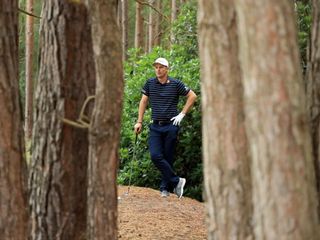
As a kid, the thing that probably developed my game the most was throwing my ball 100 yards into the woods and figuring out a path through and how many shots it would take me to get it into the hole.
That’s where the creativity is born. I think chalk lines and alignment sticks have their place, but I don’t think that’s really going to drive you on.
That can get you very, very efficient at the game, but I don’t think it’s going to make you great at the game.
Don't forget to follow Golf Monthly on Facebook, Twitter and Instagram for more golf content.
-
 'Gator Netting Is In Place' - Chevron Championship Venue Prepared For 'Safe' Winner's Jump
'Gator Netting Is In Place' - Chevron Championship Venue Prepared For 'Safe' Winner's JumpA tradition which began at the tournament's previous home could continue this year - if the champion is feeling brave enough...
By Jonny Leighfield Published
-
 New Balance 997 SL Golf Shoe Review
New Balance 997 SL Golf Shoe ReviewNew Balance produce some extremely stylish footwear and, in this review, Matt Cradock takes their spikeless 997 SL onto the course
By Matt Cradock Published
-
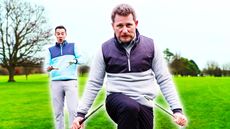 7 Most Annoying Golf Playing Partners
7 Most Annoying Golf Playing PartnersWe showcase the seven most annoying playing partners that golfers can have the misfortune of teeing it up with!
By Sam Tremlett Published
-
 How To Clean Golf Clubs And Grips
How To Clean Golf Clubs And GripsIf you want to know how to clean golf clubs and grips, check out this step-by-step guide
By Sam Tremlett Published
-
 In Praise Of Golfing In Winter
In Praise Of Golfing In WinterFergus Bisset on why he enjoys playing golf through the winter months
By Fergus Bisset Published
-
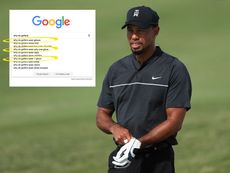 'Why Do Golfers Only Wear One Glove?' You Asked Google And We've Got The Answer...
'Why Do Golfers Only Wear One Glove?' You Asked Google And We've Got The Answer...You asked Google and we've got the answer...
By Roderick Easdale Published
-
 How To Regrip Golf Clubs
How To Regrip Golf ClubsKnowing how to regrip golf clubs means you can afford to replace them as and when they need replacing
By Joe Ferguson Published
-
 The 7 Scariest Shots in Golf
The 7 Scariest Shots in GolfWith Halloween creeping up, we have selected the 7 scariest shots in golf
By Neil Tappin Published
-
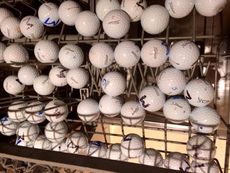 17 Ways To Tell You're Obsessed With Golf
17 Ways To Tell You're Obsessed With GolfThe tell-tale signs that you are a true golf fanatic
By Roderick Easdale Published
-
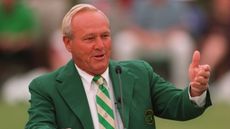 10 Of The Best Arnold Palmer Quotes
10 Of The Best Arnold Palmer QuotesHere we take a look at 10 of our favourite Arnold Palmer quotes
By Roderick Easdale Published